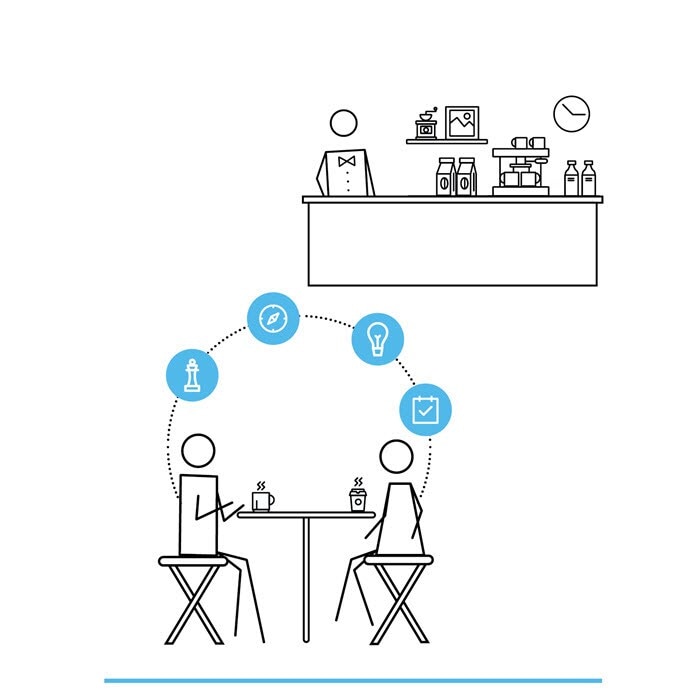The culture or the leader has been saved

Perspectives
The culture or the leader
An organizational view of the chicken or the egg question
What came first, the chicken or the egg? That question may be as old as time itself.
Explore content
- Culture, leadership, and strategy
- The cost of poor leadership
- Fit with the culture, model desired behavior
- Drive positive change
- Connect with employees
Culture, leadership, and strategy
At Deloitte, we’re pondering a modern version of that question. Does the leader create the culture or does the culture create the leader? Taking that a step further, what’s the cost to an organization’s culture if the leader is a “bad” egg?
Culture is a system of values, beliefs, and behaviors that shape how real work gets done in an organization. When organizational culture is aligned to business strategy, the workforce will act and behave in ways that support the achievement of business goals. It’s the leader’s duty to uphold the values and beliefs of the organization’s culture through their actions and decisions. This, in turn, enables the execution of strategy.
Culture, leadership, and strategy are the triumvirate that together steer the organization toward excellence—and much like any triumvirate, being in sync is necessary for an effective working relationship. Put simply, a stool with only two legs topples—every time.
The cost of poor leadership
So what is the cost when a leader fails to exhibit and balance these critical components of their role? A leader that does not align with, act on or uphold the organization’s values can encounter tensions that impact their ability to drive results. Poor leadership can reinforce the wrong values, behaviors, and attitudes, creating interferences that can shape a toxic culture and create discord between an organization’s image and how they actually operate.
A leadership study1 conducted by Deloitte measured the impact of effective leadership, finding that the quality of senior leadership had a measurable impact on analyst opinions about whether companies would be successful. Results showed, on average, an equity premium of up to 15 percent for organizations with perceived effective leadership and a discount of as low as 19 percent for organizations that were perceived to have ineffective leadership.
These results reinforce an old saying: leaders make and break organizations every day. Leadership and culture are the cross hairs that, when coordinated, can make for a competitive advantage in an organization.
Let’s take a look at three key areas where the intersection between leaders and culture is paramount.
Learn more about our CulturePath Solution:
CulturePath: A comprehensive diagnostic solution that helps organizations drive precise and targeted cultural change. Request a conversation to learn more about CulturePath.
1. A leader needs to fit with the culture and model desired behaviors
An organization’s culture isn’t always “right,” and a leader’s approach certainly isn’t infallible either—but at the end of the day, the leader’s example sets the tone for the organization. Leaders’ values, actions, and the development of their teams need to visibly reinforce the culture of the organization.
Through the example they set, leaders shape the culture in their words and actions every day. These actions then gain momentum through a variety of structures, policies, and governance, shaping how employees operate.
2. A leader needs to understand his or her fit with the culture and use that awareness to drive positive change
Some leaders tend to “go with the flow,” leveraging existing channels to get things done. Others may tend to move outside of the typical way things get done, using a different set of values or behaviors to achieve results. Leaders in tune with their fit in the existing culture can more effectively drive change through understanding when to leverage existing ways of working and when to mix up their approach. An effective leader uses this self-awareness to inform an intentional approach toward daily decision making, recognizing each action shapes the culture they operate within.

3. A leader needs to connect with employees’ hearts and minds, aligning to a common purpose
As discussed in our publication, "Take your corporate culture off cruise control," emotions are the driving force for human behavior, more than rational calculation.
To shape and sustain organizational culture, leaders need to connect with the emotional side of the workforce, creating a shared sense of purpose and motivation. Efforts leaders make to shape and guide the behaviors connected to a greater purpose can have a multiplier effect and quickly gain momentum across the organization.

Leaders shape the culture
So what does it all mean—did the egg really come before the chicken? Does the leader create the culture, or does the culture create the leader?
At Deloitte, our experience shows that a culture aligned to an organization’s strategy can provide a competitive advantage. Leaders not only set the strategy, they also play an instrumental role in connecting with the hearts and minds of their workforces, reinforcing the values and habits through their own behavior and actions, and ultimately shaping their organization’s culture.
Get the conversation started
Contact us to learn more about CulturePath.
